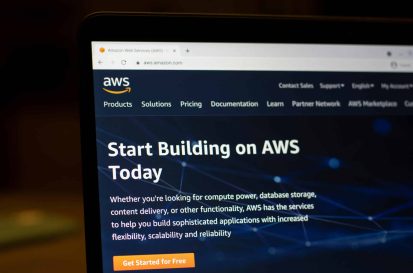A fast-growing SaaS company partnered with Intarmour to evolve its cloud architecture and delivery pipelines—embedding security and compliance without slowing innovation. The result: increased customer trust, faster onboarding of enterprise clients, and a delivery workflow built to scale securely.
The Mission
The client—a European SaaS startup focused on B2B collaboration tools—had seen strong traction and was preparing to enter enterprise markets. While their product and infrastructure had grown quickly, security controls, policies, and compliance documentation lagged behind.
Their leadership recognized the risk: without clear governance, repeatable controls, and visibility across environments, any misstep could derail growth. The goal was to build a secure, scalable platform with audit-ready DevSecOps workflows—in just six months.
Velocity and flexibility had to be preserved. But customer trust, compliance, and security could no longer be left to chance.
The Approach
Secure growth without friction
We started by aligning business goals with security milestones—transforming compliance from a blocker into an enabler.
An initial discovery sprint mapped:
Security risks in the current SDLC
Gaps in IAM, logging, and environment segmentation
Upcoming compliance and procurement requirements
This led to a DevSecOps roadmap aligned with real-world constraints—lean teams, rapid iteration, and multi-cloud complexity.
Zero trust principles, automation-first workflows, and compliance-by-design were the foundation.
The Implementation
From fragmented CI/CD to scalable security
We re-architected the delivery pipeline to introduce controls that wouldn’t break developer flow:
CI/CD pipelines were rebuilt to include SAST, dependency scanning, and secret detection
GitOps workflows enforced immutable infrastructure and policy-as-code
Kubernetes clusters were hardened with network policies, RBAC, and pod security standards
Access management was centralized via SSO, scoped roles, and session monitoring
Terraform and Helm were used across environments, ensuring drift-free, versioned deployments.
Audit evidence—like approvals, scans, and test coverage—was captured automatically at each stage. Security became part of delivery, not a bottleneck after it.
Compliance Layer
SOC 2 and ISO 27001 readiness without the overhead
Enterprise clients expected transparency. Security questionnaires were growing in scope and frequency. We helped the company prepare for SOC 2 and ISO 27001, not through paperwork, but through real practices:
Risk register aligned with security controls and roles
Incident response runbooks with simulations and escalation trees
Centralized logging, alerting, and retention policies
Continuous monitoring dashboards for control coverage and drift
By embedding these controls into the delivery lifecycle, audit readiness became a byproduct of execution—not a separate, burdensome project.
The Outcome
Enterprise-ready, secure by default
Within 6 months, the company had:
Rebuilt its infrastructure and CI/CD pipeline with embedded security controls
Reduced manual compliance work by 70% thanks to automation
Improved security posture with <3h response time for critical vulnerabilities
Passed multiple enterprise security reviews with no major findings
Today, the company scales confidently into regulated markets—knowing that its security practices grow with it. What began as a tactical project became a strategic capability.



